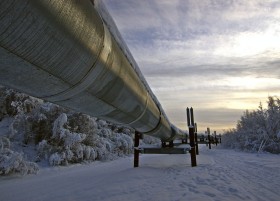Operation of the Dakota Access Pipeline (DAPL) hit a potential roadblock when a federal district judge ruled that the Army Corps of Engineers (Corps) had approved the project without adequately considering the rights of the Sioux tribe living on the Standing Rock Reservation, which spans the North Dakota/South Dakota border near Lake Oahe. The pipeline runs under Lake Oahe but does not enter the Standing Rock Reservation. Nonetheless, in a ruling issued June 14, 2017, Judge James E. Boasberg of the U.S. District Court for the D.C. District said that the Environmental Impact Statement (EIS) the Corps issued for the project was incomplete.
“Although the Corps substantially complied with [the National Environmental Policy Act] in many areas, the Court agrees that it did not adequately consider the impacts of an oil spill on fishing rights, hunting rights, or environmental justice, or the degree to which the pipeline’s effects are likely to be highly controversial,” wrote Boasberg.” To remedy those violations, the Corps will have to reconsider those sections of its environmental analysis upon remand by the Court.”
Boasberg did not order that operation of the pipeline must cease and instead told litigants to prepare additional briefs on the case’s remedy.
Lake is home to eight pipelines
The DAPL is a nearly 1,200-mile pipeline designed to move more than half a million gallons of crude oil from North Dakota to Illinois every day. The final phase of the project was construction of the pipeline’s segment beneath Lake Oahe, which is on federal land. Dakota Access LLC, the company that built the pipeline, points out that 99.98 percent of the pipeline is on private land; the company also notes that the “area of construction” near Lake Oahe is already “home” to eight other pipelines, including 42-inch pipelines that have been in operation for over 30 years. Having received the needed Corps approval and permit, Dakota Access LLC completed construction of the line in March 2017 and began placing oil in the pipeline. The DAPL became fully operational June 1, 2017.
Blocked, then unblocked
In an effort to block Dakota Access LLC’s construction of that last pipeline segment and operation of the DAPL, the Standing Rock Sioux tribe filed suit with the district court in July 2016. The Cheyenne River Sioux tribe intervened shortly thereafter. In December 2016, the Obama administration announced that it would not provide the Dakota Access LLC with the Mineral Leasing Act (MLA) easement needed to construct the Oahe Lake portion of the pipeline. Shortly after taking office, President Donald Trump reversed that decision, and the Corps issued the MLA permit. In the litigation, the tribe has been represented by Earthjustice.
“This decision marks an important turning point,” said Jan Hasselman, an Earthjustice attorney. “Until now, the rights of the Standing Rock Sioux Tribe have been disregarded by the builders of the Dakota Access Pipeline and the Trump administration—prompting a well-deserved global outcry. The federal courts have stepped in where our political systems have failed to protect the rights of Native communities.”
Boasberg’s opinion in Standing Rock Sioux Tribe et al. v. U.S. Army Corp of Engineers is here.

